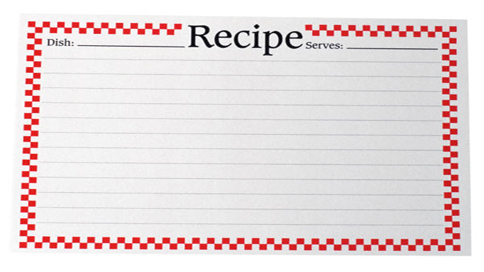
15 Nov It’s Thanksgiving: Here’s a 10-step “recipe” to carving out your career
OK, so you’ve been out of work for three to nine months – or more – and you have been/are determined to give it your all to find the role you desire. In this economy, it’s not an easy task, but it is achievable!
As a career coach, the most common client statement I’ve heard is, “Looking for a job IS a job!” Having been unemployed, I understand the sentiment. During that period, I understood, also, that I had to be my own best cheerleader and I had to have a plan.
So my question to you, job-seeker, is: do you have a strategy? If so, have you written that “strategy” down, either on paper or in Word?
If not, MAKE A PLAN! As writer Harvey McKay stated, “If you fail to plan, then you plan to fail.” I know that any determined job-seeker isn’t planning on failure. So that means you have to have a plan.
A plan can be compared to a tried-and-true recipe: if you have all the ingredients, then the end result will be something to savor!
Many of our clients’ success stories have centered around them employing creative ways to get noticed, via both a resume and in person – AND they have had, or developed, a plan. They also committed to “doing the work,” one of the most integral parts of the “recipe.”
Your recipe for writing a successful career plan should include these ingredients:
A quiet space to write your plan. It allows you to clear your mind and to think freely.
Timing it. Create a defined “start” and “end” date of your search. (Just like a recipe, there’s a start and an end.) It can be a simple statement you write, or you can add “check-in” points on your Outlook or personal calendaring system.
Finding out who you are. Allot one to two hours, spread out over two day, for self-assessment. (Google “free personality and competency assessments” to find some.)
Defining your plan. After evaluating your assessment results, dedicate a focused hour to defining your Plan A, B and C career interests, written as goal statements. Then write three bullet points of ways to reach each goal. For example:
Plan A: To become a project manager within XX months after attending project management class and passing the PMP exam.
- Research cost of classes and low cost options.
- Meet with advisor at training facility.
- Register for classes.
Posting it. Post your “Plan A/B/C” where you can see it, such as on your phone as a screensaver or on a Post-It note to be placed on your dashboard or your bathroom mirror. Remember, these are your career interests and the first steps to getting there; you’re still developing the plan.
Develop an action item checklist. Include in the plan two to three hours each day of targeted job-search activities related to Plan A and tie dates/deadlines to those items (e.g., attend two networking events this month, register with a staffing company by Thursday, etc.).
Relax, relate and release. Do this at least one hour each day to rejuvenate and regain momentum. And give yourself a “day off” on one of the weekdays! De-stress by doing something relaxing on this “job-search-free” day.
Monitor your progress. By comparing your progress to your end date, reevaluate whether you need to revise that end date. If you’re behind, ask yourself why you are and what derailed you?
Seek expert help. Use Charlotte Works’ career and resume coaches to help fine-tune what you’ve already started. And, as I always say, “self-educate” by using the Internet for expert opinions on all things career-related.
Reward yourself. If you’ve made progress toward your goals, take satisfaction in checking some items off as complete!
If you’re ready for your next professional adventure, use some, if not all, of these ingredients in your recipe for career success. When you do, you’ll reap the sweet rewards!


